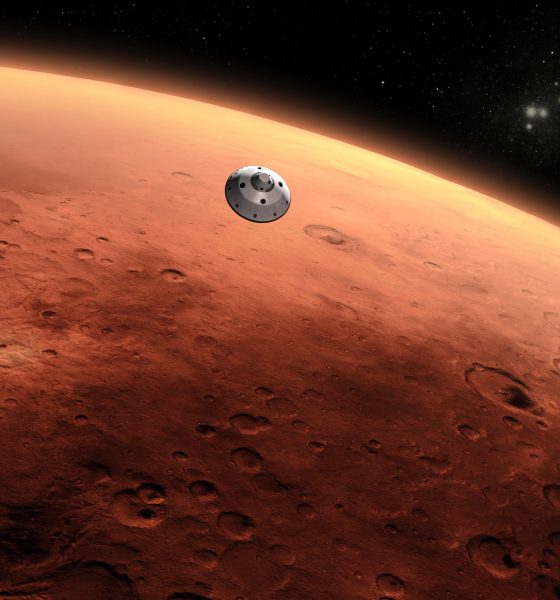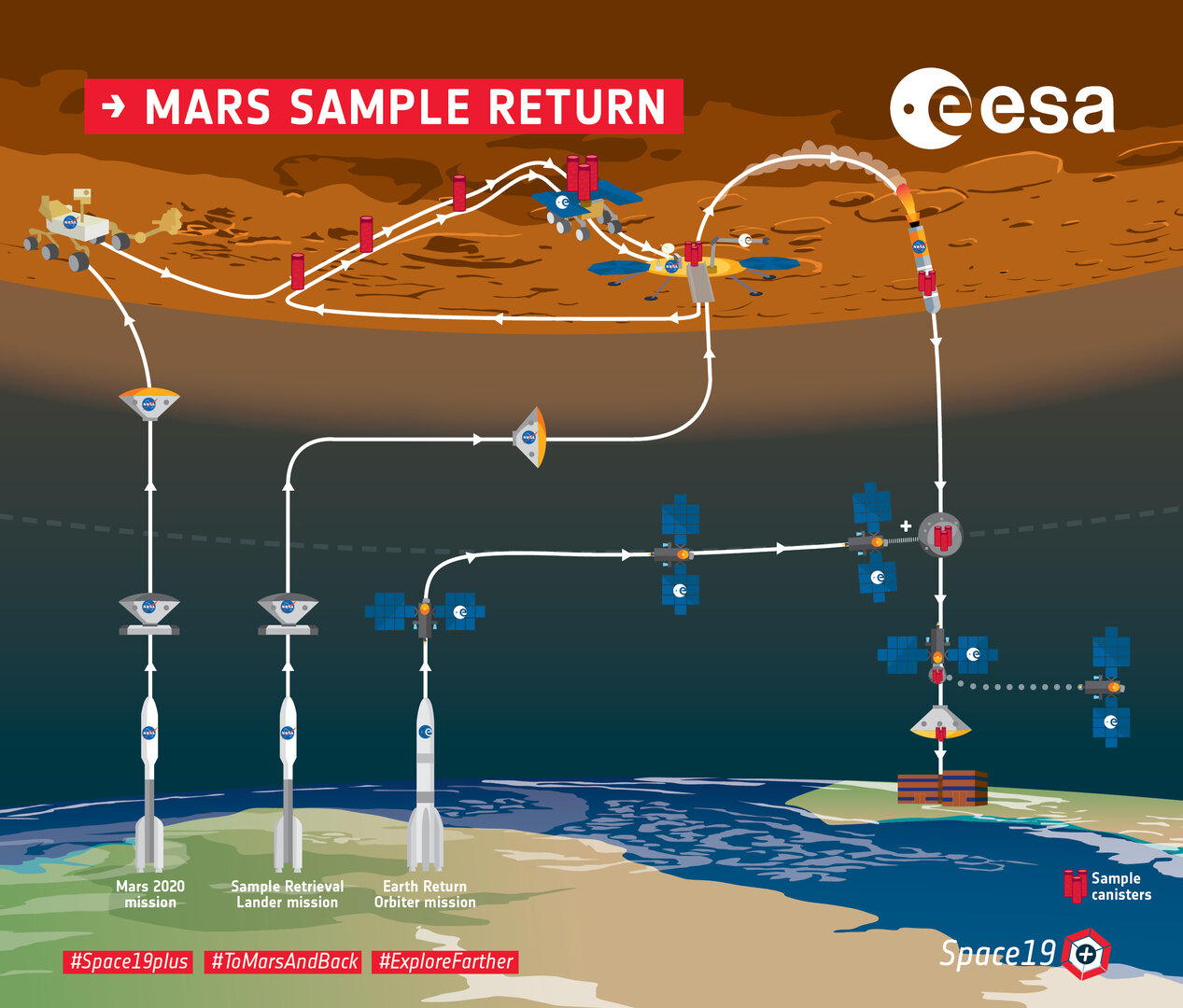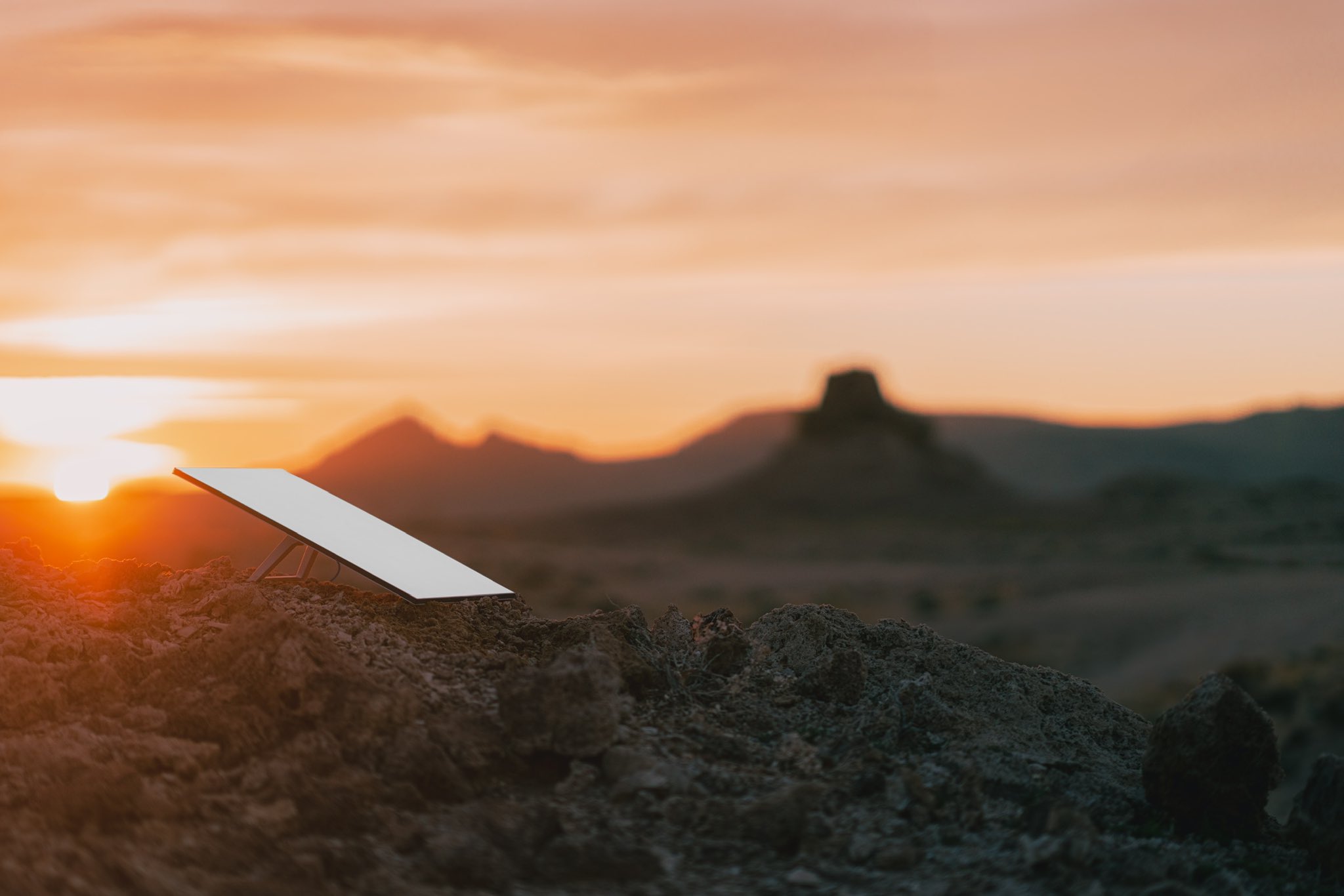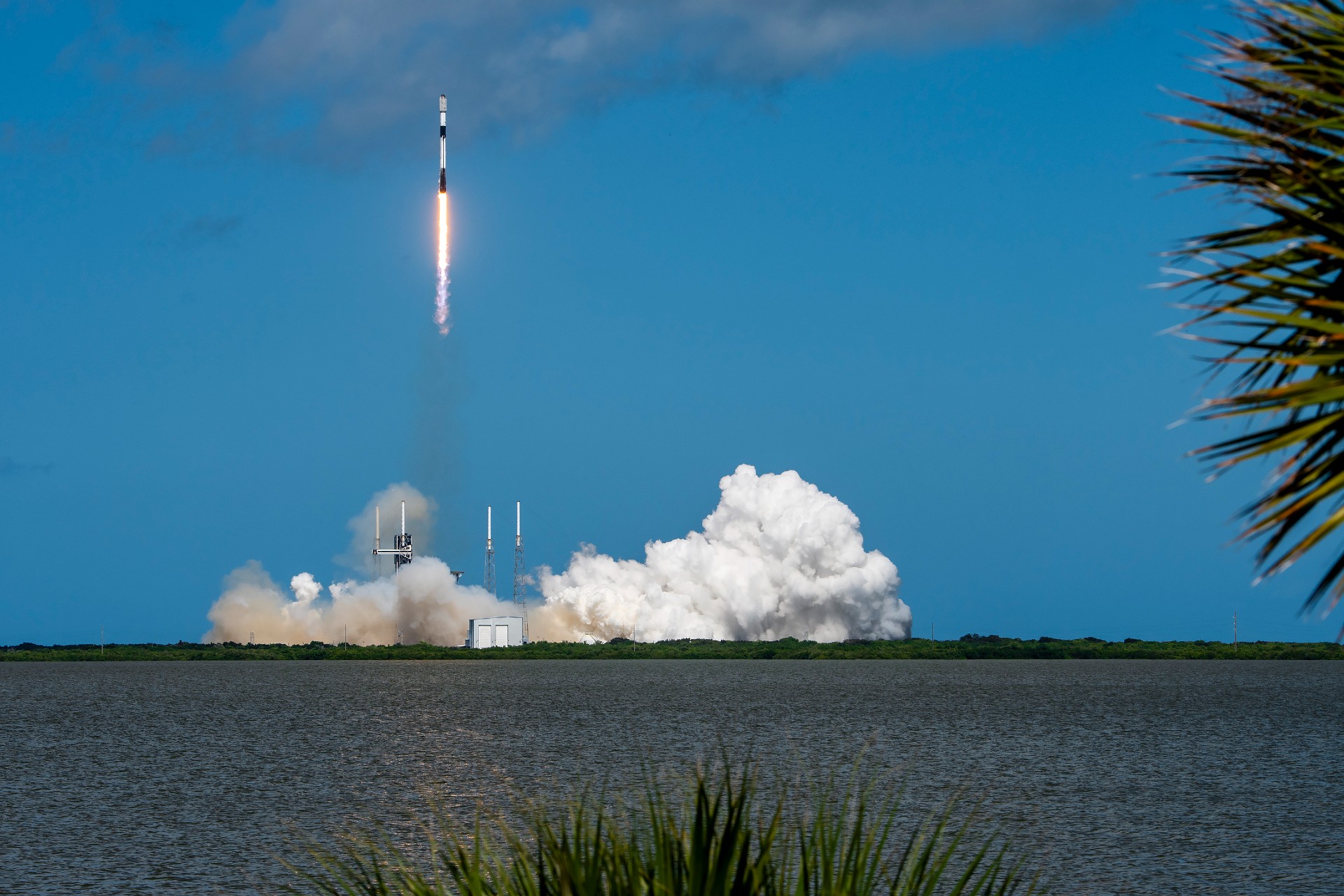

Space
Mars sample-return mission gets boost from Trump’s 2021 budget request
On Monday, Feb. 10, the White House released its 2021 federal budget request, and in it, the administration identified NASA’s Mars sample return plans as a top priority. It also earmarked funding for a future mission to map out where ice is located on Mars.
The request asks for $25.2 billion for NASA, which is roughly a 12% boost over what the agency’s current budget is.
Of that $25.2 billion, Trump has designated $233 million for “Mars Future Missions” — one of which hopes to transport pristine pieces of the Red Planet to Earth, sometime around the 2031 time frame.
“Mars Future supports the development of the Mars Sample Return (MSR) mission that is planning to enter formulation (Phase A) as early as the summer of FY 2020,” NASA officials wrote in a description of the agency’s proposed 2021 allocation.
“In FY 2021, MSR formulation activities include concept and technology development, and early design and studies in support of the Sample Return Lander and the Capture/Containment and Return System,” they added. “Mars Future also supports a study of the facility required for handling of returned samples.”

The samples NASA is referring to will be collected by NASA’s next Mars rover, which is scheduled to launch in July. Dubbed the Mars 2020 rover, the six-wheeled robot will land on Mars in Feb. 2021, touching down inside Jezero Crater. It’s goal: to look for signs of life, and to collect samples of Mars for future return to Earth.
The rover, which will receive an official name sometime in March, will bag and tag samples of rocks and dirt, sealing them in canisters for eventual return to Earth. Once they arrive here, scientists all around the world will be able to study the samples and better understand our celestial neighbor.
The sample return part of the mission is a collaboration between NASA and the European Space Agency (ESA). It will be a multi-step process, which includes the launch of NASA’s Sample Return Lander (SRL) followed by ESA’s Earth Return Orbiter (ERO).
The logistics are still being finalized as NASA is looking for a director to lead the program. But a rough outline of the planned return can be broken down as follows:
NASA’s sample return vehicle will carry a small rocket called the Mars Ascent Vehicle (MAV) along with an ESA-built rover, called the Sample Fetch Rover (SRF). The SRF will seek out the samples collected by the 2020 rover, and haul them to the MAV.
From there, the MAV will then launch the samples into orbit around Mars; there they’ll be picked up by the ERO, and the craft will head back toward Earth. Once in close proximity to Earth, the ERO will jettison the container, and it will land in the Utah desert. NASA expects this to all happen around 2031, although none of the dates are official at this point.
Also outlined in the budget is a need for a Sampling Receiving Facility, where the precious bits of Mars will be handled with the utmost care. In the facility, scientists will catalog the samples, and make sure that there’s no cross-contamination with Earth particles. (And to ensure that if there is life on Mars, no little Martian microbes will get out into the environment.)

But that’s not all, the “Mars Future Missions” budgetary line also allows for a collaboration with Canada to create the Mars Ice Mapper. Detailed information on this project is scarce at the moment as it’s in its very early stages.
“The Mars Ice Mapper is a remote sensing mission under study intended to map and profile the near-surface (3-15 meters) water ice, particularly that which lies in the mid-latitude regions, in support of future science and exploration missions,” NASA officials wrote in the budget document.
The Mars Ice Mapper could be a preliminary step in the effort to put humans on Mars, a goal NASA aims to accomplish sometimes in the 2030’s.
The 2021 budget request allocates more money to future Mars missions than previous budgets have, lining up with NASA’s overall goal of sending astronauts to both the moon and Mars.
If this budget request is any indication, the “Mars Future Missions” programs could set their budgets steadily increased as the years progress. But it’s not set in stone. The request is just that, a request. Congress has the ultimate approval and could choose to fund everything as it, or shuffle things around. Let’s hope it’s the latter so valuable programs, like STEM engagement, Earth science missions, and an incredible telescope are not cancelled.

Cybertruck
Tesla Cybertruck fleet takes over at SpaceX’s Starbase
Interestingly, the Cybertruck uses the same exterior, a stainless steel alloy, as SpaceX rockets. This synergy between the two companies and their very different products shows a very unified mentality between Musk companies.

Tesla Cybertrucks have taken over at SpaceX’s Starbase facility in Texas, as hundreds of the all-electric pickup trucks were spotted late last week rounding out a massive fleet of vehicles.
The Cybertruck fleet is geared toward replacing gas vehicles that are used at Starbase for everyday operations. The only surprise about this is that it was not done sooner:
Was just visiting. pic.twitter.com/5Q9wPPaeuH
— Derek Li (@derek1ee) October 31, 2025
Deliveries have been going on for a few weeks, as Cybertrucks have made their way across the state of Texas from Austin to Starbase so they could be included in SpaceX’s fleet of vehicles at the facility.
Interestingly, the Cybertruck uses the same exterior, a stainless steel alloy, as SpaceX rockets. This synergy between the two companies and their very different products shows a very unified mentality between Musk companies.
However, there are some other perspectives to consider as SpaceX is utilizing such a massive fleet of Cybertrucks. Some media outlets (unsurprisingly) are seeing this as a move of weakness by both Tesla and SpaceX, as the aerospace company is, in a sense, “bailing out” lagging sales for the all-electric pickup.
It’s no secret that Tesla has struggled with the Cybertruck this year, and deliveries have been underwhelming in the sense that the company was anticipating between 1 million and 2 million orders for the vehicle before it was widely produced.
A lot of things changed with the Cybertruck between its 2019 unveiling and 2023 initial deliveries, most notably, price.
The price of the Cybertruck swelled significantly and priced out many of those who had pre-ordered it. Some have weighed the option of whether this purchase was a way to get rid of sitting inventory.
However, it seems more logical to consider the fact that SpaceX was likely always going to transition to Teslas for its fleet, especially at Starship, at some point.
It doesn’t seem out of the question that one Musk company would utilize another Musk company’s products, especially considering the Cybertruck has been teased as the vehicle that would be present on Mars.
News
SpaceX opens up free Starlink service for those impacted by Hurricane Melissa

SpaceX is opening up its internet service, Starlink, to those impacted by Hurricane Melissa, as it made landfall in Jamaica and the Bahamas as a Category 5 storm.
Hurricane Melissa is expected to reach wind speeds of over 165 MPH over the next few days as it extends out into the Atlantic Ocean by Thursday and Friday.
Satellite imagery shows Hurricane #Melissa‘s growth from its formation on October 21 to a Category 5 hurricane through October 27, 2025. #HurricaneMelissa pic.twitter.com/goR3Hbgb9c
— The Weather Network (@weathernetwork) October 27, 2025
Citizens in Jamaica and the Bahamas have been preparing for the storm for the past week, getting necessary goods together and preparing for the massive storm to arrive. It finally did yesterday, and the first images and video of the storm are showing that it could destroy many parts of both countries.
Starlink is now being opened up for free until the end of November for those impacted by the storm in Jamaica and the Bahamas, SpaceX announced today:
For those impacted by Hurricane Melissa in Jamaica and the Bahamas, Starlink service is now free through the end of November to help with response and recovery efforts → https://t.co/fUko3xSviJ
— Starlink (@Starlink) October 28, 2025
It is a move similar to the one the company made last year as Hurricane Helene made its way through the United States, destroying homes and property across the East Coast. SpaceX offered free service for those impacted by the destruction caused by the storm.
The free Starlink service was available until the end of 2024.
Elon Musk’s companies have also made similar moves to help out those who are impacted by natural disasters. Tesla has offered Free Supercharging in the past, most notably during the California wildfires.
Tesla and SpaceX’s LA fire relief efforts: Cybertrucks, free Starlink and more
One major advantage of Starlink is that it is available for use in situations like this one, where power might be required to operate things like a modem and router.
Internet access is a crucial part of survival in these situations, especially as it can be the last leg some stand on to get in touch with emergency services or loved ones.
News
SpaceX reaches incredible Starlink milestone

SpaceX has reached an incredible milestone with its Starlink program, officially surpassing 10,000 satellites launched into low Earth orbit since starting the program back in 2019.
Last Sunday, October 19, SpaceX launched its 131st and 132nd Falcon 9 missions of 2025, one from Cape Canaveral, Florida, and the other from Vandenberg, California.
The 10,000th Starlink satellite was aboard the launch from California, which was Starlink 11-19, and held 28 v2 mini optimized satellites.
The achievement was marked by a satellite tracker developed by Jonathan McDowell.
🚨 With its Falcon 9 launch last Sunday, SpaceX officially has 10,000 Starlink satellites in orbit pic.twitter.com/xS5RVZ4ix0
— TESLARATI (@Teslarati) October 26, 2025
The first Starlink launch was all the way back on May 23, 2019, as SpaceX launched its first 60 satellites from Cape Canaveral using a Falcon 9 rocket.
Of the over 10,000 satellites in orbit, the tracker says 8,608 are operational, as some are intentionally de-orbited after becoming faulty and destroyed in the atmosphere.
SpaceX has truly done some really incredible things during its development of the Starlink program, including launch coverage in a global setting, bringing along millions of active subscribers that use the service for personal and business use, locking up commercial partnerships, and more.
Starlink currently operates in around 150 countries, territories, and markets and is available at least somewhere on all seven continents.
Additionally, Starlink has over 5 million subscribers worldwide, and 2.7 million have joined the program over the past year. It has revolutionized internet access on commercial aircraft as well, as several high-profile airlines like Qatar and United, among many others, have already installed Starlink on some of their planes to deliver more stable connectivity for passengers and crew.
SpaceX has the approval to launch 12,000 Starlink satellites from the FAA, but it plans to bring over 30,000 to its constellation, giving anyone the ability to have access to high-speed internet.









